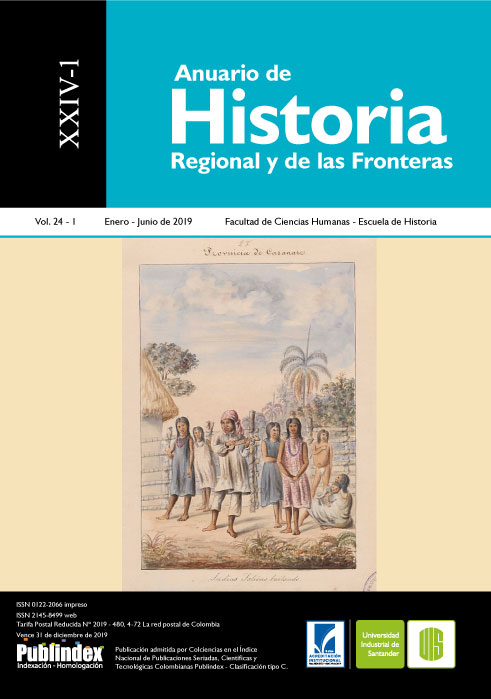Some Transformative Aspects of Music in Évora Cathedral (Portugal) in the Baroque: The Musical Production of Pedro Vaz Rego in the First Decades of the Eighteenth Century
Published 2019-03-01
Keywords
- Cathedral,
- Religious Music,
- Stile Concertato,
- Musical Instrument
How to Cite
Abstract
Évora Cathedral was an important Portuguese musical centre between the sixteenth and nineteenth centuries where numerous composers occupied the posts in its musical service producing repertory to be used there. While for the sixteenth and seventeenth centuries not much repertory has survived, for the last decades of the seventeenth and eighteenth century a substantial number of sources provide a glimpse of the musical activity in the Cathedral, notably the composer Pedro Vaz Rego. Through the analysis of his works, focusing the characteristics of an old style predominantly polyphonic and a modern style concertato, some particularities of this composer were identified. In the analysed works it is noticed that Rego was simultaneously author of works in a more conservative style and works that point toward what was produced in the Portuguese musical institutions, notably the Patriarcal of Lisbon where the Italian style was installed, influencing each other, placing the composer in a period of transition regarding the Évora context.
Downloads
References
Manuscritos de arquivos
Arquivo da Sé de Évora, Fundo Musical, Códice n.º 5.
Arquivo da Sé de Évora, Fundo Musical, Códice n.º 8.
Arquivo da Sé de Évora, Fundo Musical, Diversos n.º 45.
Arquivo da Sé de Évora, Fundo Musical, Diversos n.º 175.
Arquivo da Sé de Évora, Fundo Musical, Diversos n.º 176.
Arquivo da Sé de Évora, Fundo Musical, Diversos n.º 177.
Arquivo da Sé de Évora, Fundo Musical, Diversos n.º 178.
Arquivo da Sé de Évora, Fundo Musical, Diversos n.º 179.
Arquivo da Sé de Évora, Fundo Musical, Livros Impressos de Polifonia n.º 3.
Arquivo da Sé de Évora, Fundo Musical, Missas pro Defunctis n.º 13.
Arquivo da Sé de Évora, Fundo Musical, Musica Mariana n.º 88.
Arquivo Distrital de Portalegre, Livro de Baptizados da Matriz de Campo Maior 1668-1678.
Biblioteca Pública de Évora, Fundo Musical, Cód. CLI/1-5 d n.º 24.
Fábrica da Sé Patriarcal, Fundo Musical, Livro de Coro IX
Fontes secundárias
Livros
Alegria, José A. História da Escola de Música da Sé de Évora. Lisboa: Fundação Calouste Gulbenkian, 1973.
Alegria, José A. O Colégio dos Moços do Coro da Sé de Évora. Lisboa: Fundação Calouste Gulbenkian, 1997.
Barata, António F. Esboços Chronologico-Biograhicos dos Arcebispos da Egreja deÉvora. Coimbra: Imprensa Litteria, 1874.
Barbosa Machado, Diogo. Bibliotheca Lusitana. Tomo III, Lisboa: Ignacio Rodrigues, 1752.
Cerone, Pietro. El melopeo y maestro. Libro XII, Nápoles: Iuan Bautista Gargano y Lucrecio Nucci, Impressores, 1613.
Espanca, Túlio. “Artes e Artistas em Évora no Século XVIII”. A Cidade de Évora 21-22 (1950): 75-141.
Espanca, Túlio. “Fundação da Nova Capela-Mor da Catedral de Évora”. A Cidade de Évora 23-24 (1951): 153-208.
Joaquim, Manuel. Vinte Livros de Música Polifónica do Paço Ducal de Vila Viçosa. Lisboa: Fundação Casa de Bragança, 1953.
Lundberg, Mattias. Tonus Peregrinus: The History of a psalm-tone and its use in Polyphonic Music. Burlington: Ashgate, 2011.
Nery, Rui V. e Castro, Paulo F. de. História da Música (Sínteses de Cultura Portuguesa). Lisboa: Europália/Imprensa Nacional-Casa da Moeda, 1992.
Pereira, Gabriel. Estudos Eborenses. Vol. 2. Évora: Edições Nazareth, 1948.
Stevenson, Robert (ed.). Autores Vários: Vilancicos Portugueses. Portugaliae Musica Vol. XXIX. Lisboa: Fundação Calouste Gulbenkian, 1976.
Artigos em revistas
Alvarenga, João P. d’. “Polyphonic Church Music and Sources from Late SixteenthCentury Évora Cathedral”. Revista Portuguesa de Musicologia 2. 1 (2015): 19-40.
Alvarenga, João P. d’. “To Make of Lisbon a New Rome: The Repertory of the Patriarchal Church in the 1720s and 1730s”. Eighteenth-Century Music 8. 2 (2011): 179-214.
Henriques, Luís. “A atividade litúrgico-musical no convento de Nossa Senhora dos Remédios de Évora: o seu papel na paisagem sonora da cidade no século XVII”. Herança-Revista de História, Património e Cultura 1. 1 (2018): 73-92.
Henriques, Luís. “A nova capela-mor setecentista da Catedral de Évora: Uma abordagem ao seu impacto na atividade musical de Pedro Vaz Rego e Ignácio António Celestino”. Arte y Patrimonio 3 (2018): 77-92.
López-Calo, José. “L’intervento di Alessandro Scarlatti nella controversia sulla Messa 'Scala Aretina’ di Francisco Valls”. Analecta Musicologica 5 (1968): 178-200.
Rodríguez, António J. Díaz e Codes, Ana I. López-Salazar. “El cabildo catedralicio de Évora en la Edad Moderna (1547-1801)”. Historia y Genealogía 4 (2014): 31-58.
Teses, apresentações, documentos e outros inéditos
Henriques, Luís. “A paisagem sonora de Évora no século XVII: Perspectivas a partir da actividade musical das instituições religiosas da cidade”. Book of Proceedings II International Congress on Interdisciplinarity in Social and Human Sciences. Faro: Research Centre for Spatial and Organizational Dynamics, 2017.

